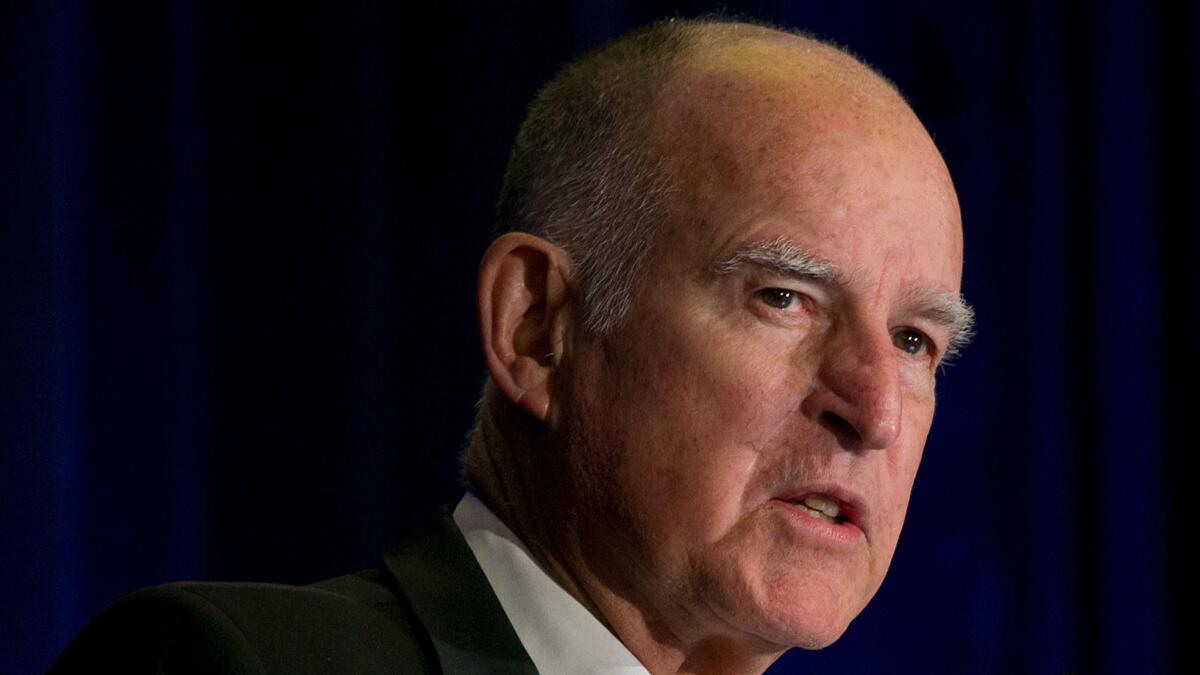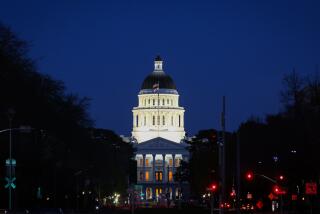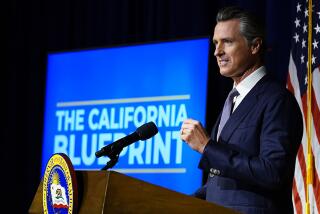Gov. Jerry Brown proposes topping off California’s rainy-day fund in his new state budget

Seeking to capitalize on another year of unexpectedly strong tax revenue collections, Gov. Jerry Brown asked state lawmakers on Wednesday to fully fund California’s rainy-day cash reserve fund to $13.5 billion by next summer, the largest cash reserve in state history.
Brown said the decision will help the state be ready for the next recession.
“The only way you can prepare is to watch your spending every year and build up the rainy-day fund,” he said at a news conference in Sacramento to unveil his proposed $190.3-billion budget for the fiscal year that begins in July.
In 2014, voters approved a substantial overhaul of the state’s existing cash reserve rules, a plan championed by Brown and legislative Democrats. That law mandates cash deposits until the reserve totals 10% of the state’s general fund. Brown and Democrats have taken advantage of successive years of tax revenue growth to pre-pay some of the required deposits, thus allowing the reserves to grow faster than otherwise expected.
“We have our piggy bank waiting for the next governor,” Brown said said as he showed off a chart showing the increase in reserve funds. “The whole point is to think ahead and minimize the pain that is coming.”
The decision was hardly a surprise for close watchers of the state budget. In the seven years since he returned to the governor’s office, Brown’s primary focus has been to ensure the state would not again face short-term deficits in the tens of billions of dollars. While total spending has still grown since 2011, advocates for a variety of social services programs have frequently been disappointed that Brown refuses to go along with plans to fully restore some of the services cut during the depths of the recession.
In his final spending plan before leaving next January due to term limits, Brown also proposed creating a wholly online community college curriculum “targeted at people who are already in the workforce” and need to update their skills.
Mandated funding for K-12 education would grow to $78.3 billion, mostly due to the requirement that schools receive a sizable earmark of annual tax revenues. The governor went beyond those requirements in the new proposal by adding $3 billion to the program that targets disadvantaged schools, the Local Control Funding Formula he championed in 2013.
Brown also proposed full funding of a law passed last year that waives all fees for first-time California community college students. The decision, which will cost $46 million in the coming fiscal year, was applauded by those who believe it will serve as an incentive for those who otherwise wouldn’t enroll.
The budget plan also assumes $4.6 billion in new transportation funding, sparked by last year’s increase in the California gas tax increase. Most of that, $2.8 billion, will be spent on repairs to roads, highways and bridges.
Brown dismissed concerns that California should be hunkering down for angry clashes with Republicans in Washington, even though the budget assumes robust funding for healthcare still being provided through the Affordable Care Act.
“I wouldn’t want to portray a California-Washington battle,” he said.
More to Read
Sign up for Essential California
The most important California stories and recommendations in your inbox every morning.
You may occasionally receive promotional content from the Los Angeles Times.











